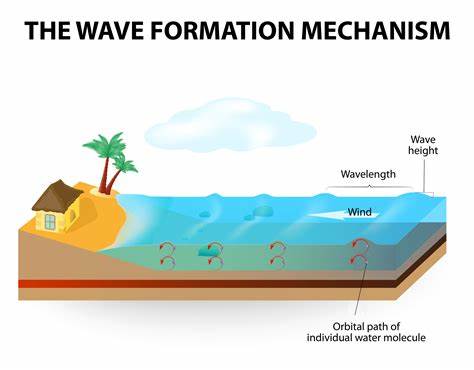
Renewable Energy Sources: Harnessing the Power of Waves and Tides
Introduction
Renewable energy sources are essential for meeting the increasing energy demands of our world and mitigating climate change. Waves and tides are particularly promising as sustainable alternatives. This article provides an in-depth exploration of the historical background, key concepts, main discussion points, case studies, current trends, challenges, future outlook, and importance of wave and tidal energy in the global energy mix.
Historical Background
Wave and tidal energy have been utilized by ancient civilizations for thousands of years, making them some of the earliest forms of renewable energy. Since then, these technologies have undergone significant advancements, leading to groundbreaking developments.
Key Concepts and Definitions
Wave energy involves using wave motion to generate electricity, while tidal energy utilizes the gravitational forces of the moon and sun. It is crucial to understand the differences between wave and tidal energy, as well as related terms like wave power, tidal barrage, and tidal stream.
Main Discussion Points
Powering Our World with Waves
This section explores wave energy conversion technologies such as wave energy converters and oscillating water columns. It also discusses the advantages and disadvantages of wave energy, potential project locations, and environmental impacts and mitigation measures.

Harnessing Tidal Energy for Sustainability
Various tidal energy technologies, including tidal barrages and tidal stream turbines, are examined along with their pros and cons. Suitable locations for tidal energy projects and environmental considerations are also highlighted.
Emerging Technologies and Innovations
This section focuses on recent advancements in wave and tidal energy technologies, as well as new concepts and designs that have the potential to improve efficiency and cost-effectiveness.
Case Studies or Examples
Compelling case studies, such as the European Marine Energy Centre (EMEC) in Orkney, Scotland, the MeyGen tidal energy project in the Pentland Firth, Scotland, and other wave and tidal energy projects worldwide, demonstrate the practical implementation of these technologies.

Current Trends or Developments
An overview of recent research findings, technological advancements, government policies, and investments in the wave and tidal energy industry is provided. This section highlights the market growth and potential for commercialization.
Challenges or Controversies
Examining the environmental impacts, cost-effectiveness, regulatory challenges, and public acceptance of wave and tidal energy is crucial. This section emphasizes the importance of addressing these challenges while engaging with communities.
Future Outlook
Exploring the potential of wave and tidal energy to contribute to the global energy mix is essential, alongside projected growth, market opportunities, and possibilities for integration with other renewable energy sources. Research and development priorities are also discussed.

Conclusion
In conclusion, wave and tidal energy show significant promise as sustainable power sources. This article summarizes the main points discussed, emphasizes the importance of wave and tidal energy, and calls for further exploration and investment in this field.
References
A comprehensive list of academic papers, research articles, and other relevant sources is provided for readers interested in delving deeper into the subject matter.




